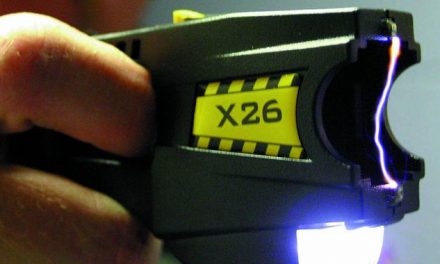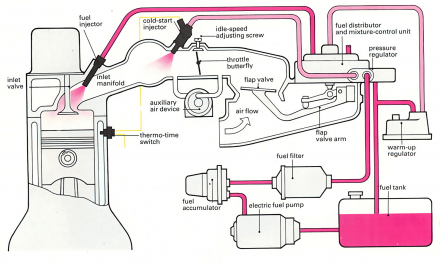An LC circuit, also called a resonant circuit, tank circuit, or tuned circuit, is an electric circuit consisting of an inductor, represented by the letter L, and a capacitor, represented by the letter C, connected together. The circuit can act as an electrical resonator, an electrical analogue of a tuning fork, storing energy oscillating at the circuit’s resonant frequency. Want to explore more about LC circuits read the full article with Pritish Kumar Halder.
LC circuits are used either for generating signals at a particular frequency, or picking out a signal at a particular frequency from a more complex signal; this function is called a bandpass filter. They are key components in many electronic devices, particularly radio equipment, used in circuits such as oscillators, filters, tuners and frequency mixers.
An LC circuit is an idealized model since it assumes there is no dissipation of energy due to resistance. Any practical implementation of an LC circuit will always include loss resulting from small but non-zero resistance within the components and connecting wires. The purpose of an LC circuit is usually to oscillate with minimal damping, so the resistance is made as low as possible. While no practical circuit is without losses, it is nonetheless instructive to study this ideal form of the circuit to gain understanding and physical intuition. For a circuit model incorporating resistance, see RLC circuit.
Terminology
The two-element LC circuit described above is the simplest type of inductor-capacitor network (or LC network). It is also referred to as a second order LC circuit to distinguish it from more complicated (higher order) LC networks with more inductors and capacitors. Such LC networks with more than two reactances may have more than one resonant frequency.
The order of the network is the order of the rational function describing the network in the complex frequency variable s. Generally, the order is equal to the number of L and C elements in the circuit and in any event cannot exceed this number.
Nomenclature
The di elemental LC circuit that we talked about in the above paragraphs is a basic example of an inductor-capacitor network. Moreover, it is also called a second-order LC circuit to differentiate it from highly complicated LC networks that have more capacitors and inductors. These LC networks that consist of more than two reactances can consist of several resonant frequencies.
A resonant frequency is defined as an undamped or natural frequency of a system. In the case of LC circuits, the resonant frequency is usually determined by the impedance L and capacitance C.
Meanwhile, the network order is an order of rational function which describes the network in complex frequency variables s. The order generally equals the number of L and C elements of the circuit and cannot exceed in any event.
Operation
An LC circuit, oscillating at its natural resonant frequency, can store electrical energy. See the animation. A capacitor stores energy in the electric field (E) between its plates, depending on the voltage across it, and an inductor stores energy in its magnetic field (B), depending on the current through it.
If an inductor is connected across a charged capacitor, the voltage across the capacitor will drive a current through the inductor, building up a magnetic field around it. The voltage across the capacitor falls to zero as the charge is used up by the current flow. At this point, the energy stored in the coil’s magnetic field induces a voltage across the coil, because inductors oppose changes in current.
This induced voltage causes a current to begin to recharge the capacitor with a voltage of opposite polarity to its original charge. Due to Faraday’s law, the EMF which drives the current is caused by a decrease in the magnetic field, thus the energy required to charge the capacitor is extracted from the magnetic field. When the magnetic field is completely dissipated the current will stop and the charge will again be stored in the capacitor, with the opposite polarity as before. Then the cycle will begin again, with the current flowing in the opposite direction through the inductor.
The charge flows back and forth between the plates of the capacitor, through the inductor. The energy oscillates back and forth between the capacitor and the inductor until (if not replenished from an external circuit) internal resistance makes the oscillations die out. The tuned circuit’s action, known mathematically as a harmonic oscillator, is similar to a pendulum swinging back and forth, or water sloshing back and forth in a tank; for this reason the circuit is also called a tank circuit.
The natural frequency (that is, the frequency at which it will oscillate when isolated from any other system, as described above) is determined by the capacitance and inductance values. In most applications the tuned circuit is part of a larger circuit which applies alternating current to it, driving continuous oscillations. If the frequency of the applied current is the circuit’s natural resonant frequency, resonance will occur, and a small driving current can excite large amplitude oscillating voltages and currents. In typical tuned circuits in electronic equipment the oscillations are very fast, from thousands to billions of times per second.

Resonance effect
Resonance occurs when an LC circuit is driven from an external source at an angular frequency ω0 at which the inductive and capacitive reactances are equal in magnitude. The frequency at which this equality holds for the particular circuit is called the resonant frequency. The resonant frequency of the LC circuit is
where L is the inductance in henries, and C is the capacitance in farads. The angular frequency ω0 has units of radians per second.
The equivalent frequency in units of hertz is
Time domain solution
Kirchhoff’s laws
By Kirchhoff’s voltage law, the voltage VC across the capacitor plus the voltage VL across the inductor must equal zero:
Likewise, by Kirchhoff’s current law, the current through the capacitor equals the current through the inductor:
From the constitutive relations for the circuit elements, we also know that
Differential equation
Rearranging and substituting gives the second order differential equation
The parameter ω0, the resonant angular frequency, is defined as
Using this can simplify the differential equation:
The associated Laplace transform is
thus
where j is the imaginary unit.
Solution
Thus, the complete solution to the differential equation is
and can be solved for A and B by considering the initial conditions. Since the exponential is complex, the solution represents a sinusoidal alternating current. Since the electric current I is a physical quantity, it must be real-valued. As a result, it can be shown that the constants A and B must be complex conjugates:
Now let
Therefore,
Next, we can use Euler’s formula to obtain a real sinusoid with amplitude I0, angular frequency ω0 = 1/√LC, and phase angle {\displaystyle \phi }.
Thus, the resulting solution becomes
Initial conditions
The initial conditions that would satisfy this result are
Series circuit
In the series configuration of the LC circuit, the inductor (L) and capacitor (C) are connected in series, as shown here. The total voltage V across the open terminals is simply the sum of the voltage across the inductor and the voltage across the capacitor. The current I into the positive terminal of the circuit is equal to the current through both the capacitor and the inductor.
Resonance
Inductive reactance magnitude XL increases as frequency increases, while capacitive reactance magnitude XC decreases with the increase in frequency. At one particular frequency, these two reactances are equal in magnitude but opposite in sign; that frequency is called the resonant frequency f0 for the given circuit.
Hence, at resonance,
Solving for ω, we have
which is defined as the resonant angular frequency of the circuit. Converting angular frequency (in radians per second) into frequency (in hertz), one has
In a series configuration, XC and XL cancel each other out. In real, rather than idealised, components, the current is opposed, mostly by the resistance of the coil windings. Thus, the current supplied to a series resonant circuit is maximal at resonance.
- In the limit as f → f0 current is maximal. Circuit impedance is minimal. In this state, a circuit is called an acceptor circuit.
- For f < f0, XL ≪ −XC. Hence, the circuit is capacitive.
- For f > f0, XL ≫ −XC. Hence, the circuit is inductive.
Impedance
In the series configuration, resonance occurs when the complex electrical impedance of the circuit approaches zero.
First consider the impedance of the series LC circuit. The total impedance is given by the sum of the inductive and capacitive impedances:
Writing the inductive impedance as ZL = jωL and capacitive impedance as ZC = 1/jωC and substituting gives
Writing this expression under a common denominator gives
Finally, defining the natural angular frequency as
the impedance becomes
where gives the reactance of the inductor at resonance.
The numerator implies that in the limit as ω → ±ω0, the total impedance Z will be zero and otherwise non-zero. Therefore the series LC circuit, when connected in series with a load, will act as a band-pass filter having zero impedance at the resonant frequency of the LC circuit.
Parallel circuit
When the inductor (L) and capacitor (C) are connected in parallel as shown here, the voltage V across the open terminals is equal to both the voltage across the inductor and the voltage across the capacitor. The total current I flowing into the positive terminal of the circuit is equal to the sum of the current flowing through the inductor and the current flowing through the capacitor:
Resonance
When XL equals XC, the two branch currents are equal and opposite. They cancel out each other to give minimal current in the main line (in principle, zero current). However, there is a large current circulating between the capacitor and inductor. In principle, this circulating current is infinite, but in reality is limited by resistance in the circuit, particularly resistance in the inductor windings. Since total current is minimal, in this state the total impedance is maximal.
The resonant frequency is given by
Note that any branch current is not minimal at resonance, but each is given separately by dividing source voltage (V) by reactance (Z). Hence I = V/Z, as per Ohm’s law.
- At f0, the line current is minimal. The total impedance is maximal. In this state a circuit is called a rejector circuit.
- Below f0, the circuit is inductive.
- Above f0, the circuit is capacitive.
Impedance
The same analysis may be applied to the parallel LC circuit. The total impedance is then given by
and after substitution of ZL = jωL and ZC = 1/jωC and simplification, gives
Using
it further simplifies to
Note that
but for all other values of ω the impedance is finite.
Thus, the parallel LC circuit connected in series with a load will act as band-stop filter having infinite impedance at the resonant frequency of the LC circuit, while the parallel LC circuit connected in parallel with a load will act as band-pass filter.
Applications
The resonance effect of the LC circuit has many important applications in signal processing and communications systems.
1)The most common application of tank circuits is tuning radio transmitters and receivers. For example, when tuning a radio to a particular station, the LC circuits are set at resonance for that particular carrier frequency.
2)A series resonant circuit provides voltage magnification.
3)A parallel resonant circuit provides current magnification.
4)A parallel resonant circuit can be used as load impedance in output circuits of RF amplifiers. Due to high impedance, the gain of amplifier is maximum at resonant frequency.
Both parallel and series resonant circuits are used in induction heating.
5)LC circuits behave as electronic resonators, which are a key component in many applications:
- Amplifiers

- Oscillators

- Filters

- Tuners

- Mixers
- Foster–Seeley discriminator

- Contactless cards
- Graphics tablets














































